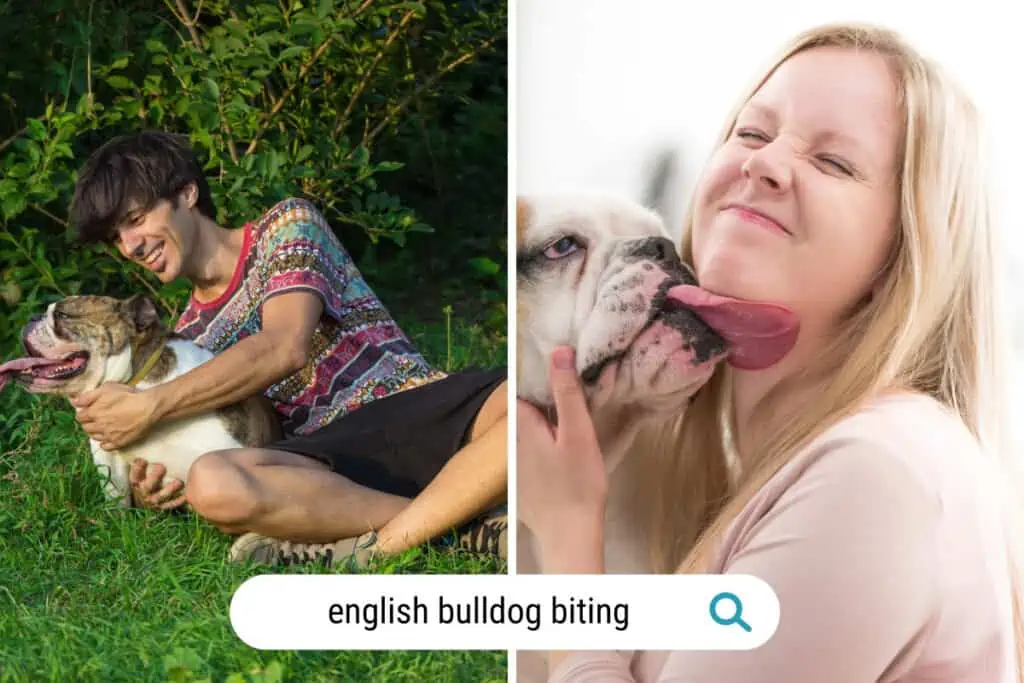Do English Bulldogs Heads Split? [Truth or Myth]
English Bulldogs are known for their distinctive appearance and one intriguing aspect of their physicality is the phenomenon known as head splitting.
Many people are curious about what this means and whether it’s a cause for concern. In this article, we’ll explore the intricacies of head splitting in English Bulldogs and provide insights into this fascinating aspect of their development.

Head splitting in English Bulldogs refers to the process where a line appears in the middle of their head as they mature into adulthood, often giving the impression that the head has split or cracked.
Contrary to some assumptions, this occurrence is not harmful or dangerous, and is actually caused by muscle growth in the dog’s head, which creates an indent in the center. With a better understanding of the science behind this captivating phenomenon, we’ll delve deeper into the unique characteristics that make English Bulldogs such beloved companions.
English Bulldog Head Anatomy

Skull Structure
English Bulldogs have a unique skull structure compared to other dog breeds. Their distinct head shape is due to brachycephaly, a condition characterized by a shortened upper jaw and nose. This causes English Bulldogs to have a broad and flattened facial appearance, which contributes to the appearance of their head “splitting.”
As the soft bones in the head begin to harden and fuse together, the head starts splitting around 3 to 4 weeks of age. This process continues until the skull is completely fused, usually around 3 to 4 months of age. Despite the misconception, a Bulldog’s head does not actually split or crack; instead, the visible line that appears in the middle of the head is due to muscle growth, leaving an indent as the dog matures into adulthood (Pterosaurinfo).
Facial Features
Aside from the skull structure, English Bulldogs have various facial features that contribute to their unique appearance. Their eyes are wide-set and round, while their ears are typically folded and set high on their heads. Additionally, they possess a heavily wrinkled face with a pushed-in nose and a pronounced underbite, adding to their distinct look.
Compared to other dog breeds, English Bulldogs tend to experience head “splitting” more as their skulls and muzzles grow larger, causing their heads to widen. This typically occurs between 8 to 12 months old.
Understanding the anatomy of an English Bulldog’s head helps to clarify the unique aspects of their head growth and development. Although their head “splitting” may appear concerning initially, knowing that it is a natural part of their growth puts concerned Bulldog owners at ease.
Head Splitting Myths and Facts

Causes and Prevalence
A common question among English bulldog owners is whether their pet’s head will split. The so-called head splitting refers to the appearance of a line in the middle of the dog’s head, caused by muscle growth as the dog matures. This occurrence is normal, and it typically begins when the bulldog is between 12 to 18 months of age. The head splitting is not a physical crack in the skull; rather, it is an indentation that forms as the head continues to grow and fill.
Misconceptions
There are several misconceptions about English bulldog head splitting. One common misunderstanding is that the head actually cracks or breaks. However, this is not the case. The visible line in the middle of the head is due to muscle growth leaving an indent as the dog transitions into adulthood.
Another misconception is the belief that head splitting only occurs in English bulldogs. While it is true that this breed tends to experience head splitting more quickly than other breeds, it is not exclusive to English bulldogs. Head growth and development are common in all dog breeds, and variations in the appearance of the head are simply a result of genetics and natural growth patterns.

Molera in English Bulldogs
Molera, the soft spot on a puppy’s head, is quite common in English Bulldogs. Although it might be concerning for some pet owners, the presence of the molera and the head-splitting process in bulldogs is a natural part of their growth and development journey.
Soft Spot Formation
The soft spot, or molera, in English Bulldogs forms as a result of the cranial bones not being completely fused when they are puppies. This soft area slowly fills in as the bones grow and fuse together.
The process is gradual, and during this time, the bulldog’s head may develop a line or indentation resembling a split. This is simply a sign of muscle growth in the dog’s head, rather than an actual split or crack in their skull (source).
Care and Prevention
Although the soft spot is a normal occurrence in English Bulldogs, it is still important to take proper care of your dog during this stage of development. Pet owners should be gentle when touching or handling their bulldog’s head to prevent any injury to the soft spot. Regular check-ups with a veterinarian are also important to ensure the molera is developing as expected and prevent any potential complications.
When it comes to prevention, there isn’t much that can be done, given that molera formation is a natural part of bulldog development. However, maintaining a healthy lifestyle for your dog, providing proper nutrition, and regular exercise can aid in their overall growth and wellbeing.
Understanding and Monitoring the Split

It’s crucial for bulldog owners to recognize that the appearance of the so-called “head-split” is usually a natural growth process as their dog matures into adulthood. Typically, the head-split starts around 3 to 4 weeks of age and it will usually be completed around 3 to 4 months of age.
Keeping an eye on your bulldog’s development and having regular veterinary visits can help ensure their health while the head is splitting. With the right care and understanding, you can help your English Bulldog grow up healthy and happy.
Potential Head-Related Health Issues
While English Bulldogs are known for their unique and adorable head shape, these features can also lead to certain health issues. In this section, we will discuss brachycephalic syndrome and hip dysplasia as two common problems.
Brachycephalic Syndrome
Brachycephalic syndrome is a common issue in flat-faced breeds like English Bulldogs. Their shortened muzzles and skulls can cause respiratory difficulties, which can be exacerbated by the breed’s narrow nostrils and elongated soft palate. Symptoms may include:
- Difficulty breathing or noisy breathing
- Snoring or snorting while asleep
- Overheating on physical exertion
- Cyanosis (blue tinged gums) during exercise or stress
Treatment options can range from lifestyle adjustments to surgery, depending on the severity of the condition. Owners of English Bulldogs must monitor their pets closely for any signs of respiratory distress.
Hip Dysplasia
Although not directly related to the head, hip dysplasia is another problem that can affect English Bulldogs due to their compact and muscular build. This genetic condition results from an improperly formed hip joint, causing the bones to rub and grind against each other. Over time, this can lead to arthritis and pain, affecting the bulldog’s quality of life. Signs of hip dysplasia include:
- Limping or stiffness when walking
- Reluctance to climb stairs or jump
- Pain when touched around the hip area
- Difficulty getting up from a lying position
Hip dysplasia can be managed with weight control, exercise modifications, and anti-inflammatory medications. In more severe cases, surgery may be required to correct the problem.
Conclusion
In the end, the concern about English Bulldogs’ heads splitting is based on a misunderstanding. The appearance of a line on the head is not due to any actual splitting of the skull, but rather the result of muscle growth as the dog matures.
It is essential for Bulldog owners to be informed and familiar with their pets’ growth patterns to ensure their well-being. The development process of a Bulldog’s head typically begins at around 3 to 4 weeks of age and can continue until around 12 to 18 months, depending on the breed and individual dog.
So, should Bulldog owners be worried about this head-splitting phenomenon? The answer is no. This is a natural part of their growth, and understanding this process can help owners better care for their furry companions. Knowledge is power when it comes to ensuring your Bulldog’s health and happiness.

Family Dog Expert Author
Hi there! I’m Stuart, a devoted dog lover and family dog expert with over a decade of experience working with our furry companions. My passion for dogs drives me to share my knowledge and expertise, helping families build strong, loving bonds with their four-legged friends. When I’m not writing for SirDoggie, you’ll find me hiking, playing with my beautiful dog, or studying music.



